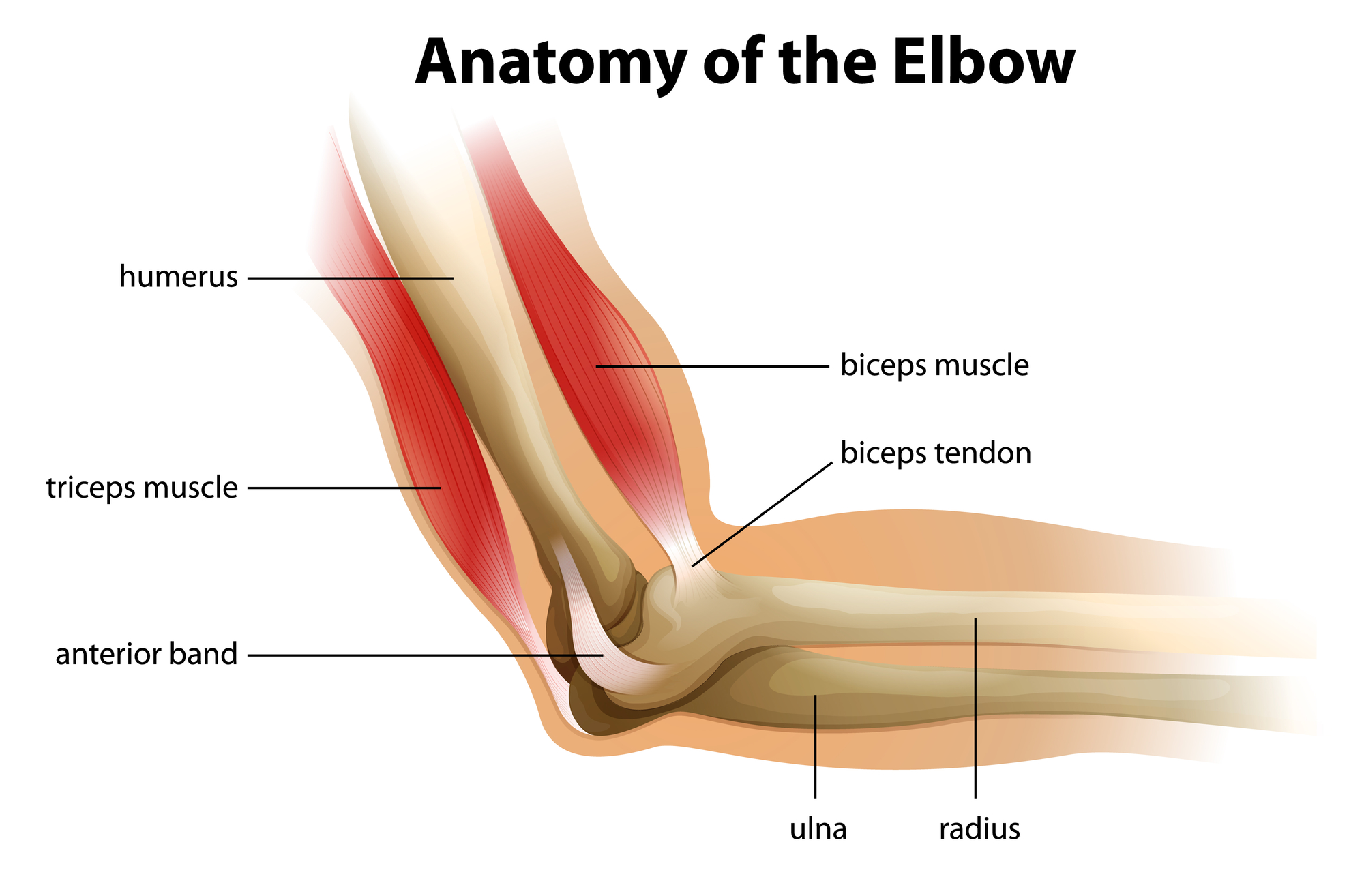Total Elbow Joint Replacement

Elbow joint replacement is less common than knee or hip replacement, but is successful in relieving joint pain and improving quality of life if you suffer with significant elbow arthritis or injury.
The elbow is a hinge joint made of three bones:
- Humerus (upper arm bone)
- Ulna (forearm bone on the pinky finger side)
- Radius (forearm bone on the thumb side)
The surfaces of the bones where the three bones meet to form the elbow joint are covered with articular cartilage, a smooth substance that protects the bones and enables the elbow to move easily. Synovial membrane covers all remaining surfaces inside the elbow joint, which lubricates the cartilage and eliminates friction as you bend and rotate your arm. Muscles, ligaments and tendons hold the elbow joint together. Several conditions can cause elbow pain and disability and lead you and your DOC orthopedic team to consider elbow joint replacement surgery.
Rheumatoid arthritis:
-
- A disease in which the synovial membrane becomes inflamed and thickened, damaging the cartilage.
Osteoarthritis:
-
- An age-related, wear and tear arthritis that causes the cartilage to wear away and bones to rub against one another.
Post-traumatic arthritis:
-
- Arthritis that follows a serious elbow injury that may cause damage to the articular cartilage.
Severe fractures:
A serious fracture of one or more bones of the elbow that cannot be surgically repaired.
Arthritis or fractures of the elbow may cause cartilage damage that can result in severe pain, limited elbow function and disability. During elbow replacement surgery, the DOC surgeon removes any scar tissue and spurs around the joint, and prepares the humerus and ulna for the prosthesis. The artificial elbow joint is made of a metal and plastic hinge with two metal stems. The stems fit inside the hollow part of the bone called the canal. After surgery, you will feel some pain, a natural part of the healing process. Your DOC surgical team will work to relieve your pain to help you recover from surgery faster. Making simple changes in your home before surgery can make your recovery period easier. For example, placing any items you may need after your surgery on low shelves prior to your surgery would be prudent because it will be hard to reach high shelves and cupboards for the first few weeks of recovery. A careful, well-planned rehabilitation program is critical to the success of an elbow replacement. The DOC physical therapists will work with you on exercises for your hand and wrist to help you avoid stiffness, control swelling, and increase range of motion. You should expect to do all basic activities of daily living. Your DOC surgical and PT team may advise you about activities to avoid, such as contact sports, activities with a risk of falling, and heavy lifting, which could loosen the elbow replacement prosthesis.
For more information on the cost of care, click here




